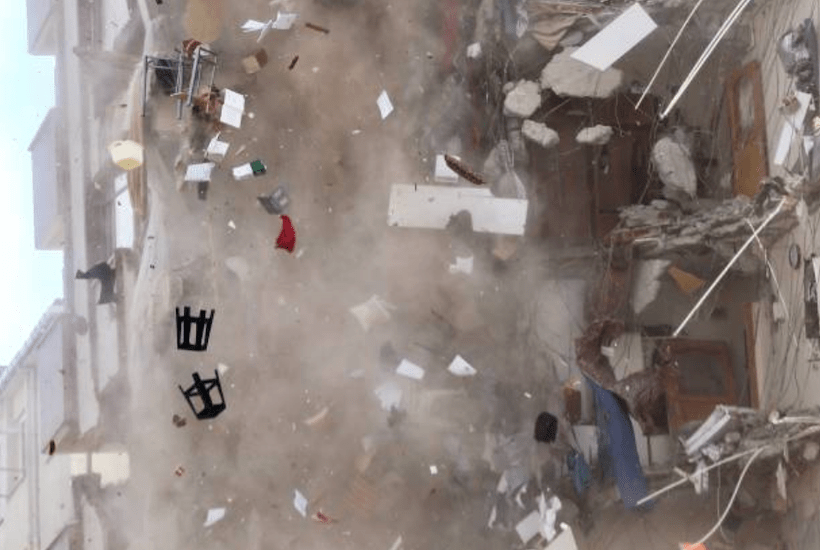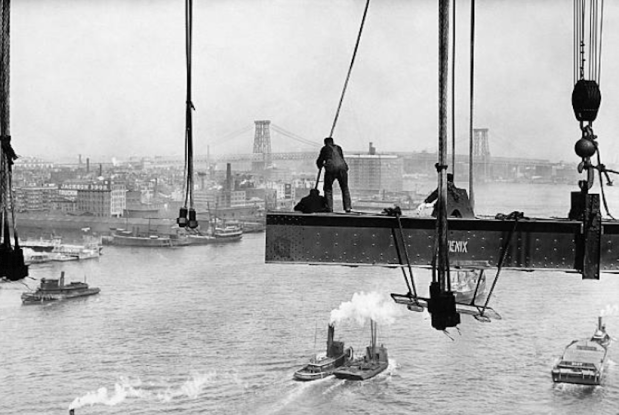You’ve probably forgotten Sydney’s Opal Tower by now, even though less than six months have passed since the residents of the luxury apartment tower spent Christmas cooped in budget accommodation, fearful that the 36 storey structure was about to collapse.
The Weekend Australian revisited the site on Saturday, talking to residents, building certifiers, architects and engineers on a fear that spreads beyond one building and around the country, a fear up there with worries over Grenfell Tower-style flammable cladding, a fear that short cuts and failed planning regimes have rendered the high rise apartments that have spread across the capitals and major regional centres in recent years are not only financially shaky – but could literally collapse.
As a dutiful engineer (albeit a mechanical, not a civil one) I was sadistically excited about the incident, so I kept my eye out for the investigation findings. The NSW government commissioned a report, which was provided on February 19, written by three distinguished engineering professors. Basically, this is what has unfolded
What happened?
The Opal tower has some fancy-looking architectural “sky gardens” that look like grooves on the exterior of the building. Some of these are six storeys high and some ten. These gardens feature a concrete wall with a nifty pattern on it.
As you may imagine, six-storey high concrete walls are very heavy, so they couldn’t just sit these on the floor slabs (floor slabs are designed to hold up all the contents of one level only, not the rest of the building). Consequently, under each of these walls lies a thick concrete beam, spanning between two of the building’s structural columns. That beam takes the weight of the wall and transfers it to the columns, which take it down to the ground. Or, at least, it’s meant to.
The problems in Opal tower related to the beam installed at the base of the wall. In at least two locations in the building (levels four and 10), the beams weren’t quite strong enough to resist “bursting”. This is less dramatic than it sounds. The concrete reinforcement in the beams bowed outwards, the surface concrete broke off, and some of the load went through to the floor-slab that the beam was designed to protect, which then cracked a bit.
Concrete is fantastic at resisting compression loading, but not tension. That is why steel reinforcement rods are set into the concrete. Steel rods have the opposite characteristics to concrete—they’re great in tension and dodgy in compression. Together, steel and concrete are the backbone of most of the marvels of the modern world.
There were a number of physical causes contributing to the Opal Tower failure: Inadequate steel tie bars meant that the beam could split under the weight it was carrying. Some reinforcement apparently used the wrong diameter rod (20 instead of 28 millimetres). The concrete also had issues. The beams should have been made from 65 mega-Pascal strength concrete, but this requirement was communicated ambiguously—the designers probably assumed it would be poured from the same concrete as the floor slab. Unfortunately the builders only achieved 50 MPa. (Should someone now test the floor slabs?)
Perhaps the oddest contributor was the join between the wall and the beam. The small gap between the two was meant to be filled with grout. The original design had grout through the whole joint, but the “shop-drawings” (a set of more detailed drawings made by the constructors) only required grout to be installed across part of the joint—I’m not sure why, perhaps accessing the other side of the joint was a practical nuisance? Anyway, this caused the load on the beam to be asymmetrical, which is not good.
The three professors were given three tasks for their report: The first was to assess the cause of damage (which I’ve already summarised above). Their second task was to describe what needs to be done to fix the issue.
What needs to be done to fix the issue?
How to make the Opal great again (MOGA)? Rebuild the wall, of course.
I couldn’t help say that, but actually the solution proposed as of February 19 was “q combination of grouting the hob to panel joints, the provision of cast in-situ sandwich panels enclosing the hob and the panel that sits immediately upon it, and the addition of exterior columns adjacent to some pre-cast panel walls.”
And, “We understand that the joint between all hob beam / panel elements has now been retrospectively fully grouted and we support this as a preliminary measure.”
So basically, more concrete. Civil engineers lurve concrete. By the way, don’t ask how this poor beam earned the name “hob”. If you Google “hob beam” all you will find is the Opal report. It seems to mean “a wall that doesn’t reach the floor”; I think they made it up specifically for this job.
So far, so good, but then we come to task three where things turned sour for me. The Profs were asked to recommend how to avoid things like this happening again in the future, and they came up with five recommendations.
How to avoid things like this happening in the future
Their first recommendation – drawing a collective groan from engineers who work in the real world – was registration of engineers.
Registration is a way of defining competence that assumes an engineer is competent if their name is on a list. Someone else still needs to have a real definition of competence in order to decide whose names go on that list, but they won’t know the particulars of the task at hand, so at best they apply a broad brush. In fact, there is evidence that engineer registration doesn’t do anything to prevent incidents. Registration can even make things worse; it promotes complaisance among engineering purchasers, who presume the skills of the engineer are now guaranteed by the registrar.
Registration imposes direct costs on engineers, but it also costs the industry due to restriction in supply of engineering services—that’s basic economics; Professionals Australia boast that their registered engineers earn 24 per cent more than other engineers, for instance. I think you’ll find that’s not because they are 24 per cent better, just more scarce.
All three of the professors who wrote the report were fellows of Engineers Australia (EA), and so it’s not surprising that they parroted so precisely the model that EA has been lobbying for, for years. They’ve succeeded in Queensland, they’re on the cusp in Victoria (the Professional Engineers Registration Bill 2019 has reached the upper house), and if the NSW government were to implement these recommendations as written, they will have succeeded there too.
Worth noting, however, is that Consult Australia, a collaborator in forming the National Engineering Registration Board, has now reversed (sorry, evolved) their position on registration due to cost and personal liability concerns.
Broadly speaking, problems in a constructed building can come from engineering error, communication error or construction error. Anyone can make an error, and being registered will not prevent it.
The second and third recommendations of the report, then, were better: design validation (looking for engineering errors) and site inspection (looking for construction errors). Who would have thought that looking for errors is indeed an effective way of finding them? (In fairness, this is not as obvious as it should be once someone has to pay for it.) I’d be interested to know, however, what design checking, QA and site inspections are already in place and why they didn’t work.
Recommendation four: raise transparency through creation of an open, online, repository of all certifications. This sounds nice; it’s good to have info in the public domain. However, what are these “certifications” they speak of? Are they site QA certificates? Qualifications of personnel? Does it include the design blueprints? (Potential thieves would appreciate that.) And what approvals processes already exist? How is the industry currently regulated? What documents are currently disclosed to get sign-off on a project like this? What was deficient about the existing process in this case? The three Profs don’t mention these things.
Recommendation five: a new Building Structure Review Board, who assess the causes of incidents and recommend changes to codes and regulations based on their findings. This has the same problem. How is the industry currently learning from its mistakes? Who currently writes the national construction code? Not discussed.
My thoughts
The three professors pointed out that they:
Found no evidence that the building certifiers had been deficient in regards to statutory expectations. Nevertheless there was a range of construction issues that occurred which were not compliant with Australian Standards.
Consequently they concluded that “statutory expectations” of “building certifiers” were the problem. This sounds logical, but notice it’s also a tautology. When errors are made, you can always blame the people paid to spot errors. And if you always take the approach that these investigators have, you end up with new review boards, registers and regulations every time something goes wrong, without giving credit to the thousands of buildings that have no problems.
A better analysis would drill down past the physical problem to the context of the decisions that led to it. Good questions are: Who approved the changes made in the shop drawings? Was there some sort of inspection plan, who wrote it and was anyone held accountable to it? Organisational factors play a large part in failures. For example, shoddy work often occurs if everyone involved is incentivised to reduce cost. Regulating an industry so that safety considerations are insulated from contrary commercial pressures is not straightforward.
Deeper understanding of this incident and of current regulations could be used to recommend smarter regulation, not more regulation of the industry. It is up to government regulators and policy-makers to review the existing system of industry oversight and determine an appropriate model. These five recommendations may be what they come up with—but I hope not.
These three professors are engineers. They’re experts at crunching numbers, talking about stress, and inventing terminology. Experts in regulation and policy-making they are not, and they were answering a question they should not have been asked. Their recommendations echoed common talking points without acknowledgement of pros and cons, nor any attempt to demonstrate they would have helped to prevent this specific incident. Really, they could just as easily have written these recommendations without even doing the investigation.
It is fair to conclude that there are lessons to be learnt from this incident, which would be healthy for the industry. But first the incident has to be understood properly. Expensive, clunky, broad-brush regulations won’t help.
Still, good to know the building’s not about to fall down, hey.
Nick Kastelein is a Christian and a conservative who grew up and lives in Adelaide where he works for an engineering consultancy.
Got something to add? Join the discussion and comment below.
Got something to add? Join the discussion and comment below.
Get 10 issues for just $10
Subscribe to The Spectator Australia today for the next 10 magazine issues, plus full online access, for just $10.


























Comments
Don't miss out
Join the conversation with other Spectator Australia readers. Subscribe to leave a comment.
SUBSCRIBEAlready a subscriber? Log in